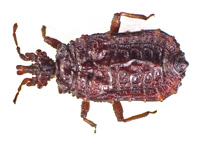Abstract
Phytotelmata, or plant-held water bodies, often house complex aquatic invertebrate communities. Microdrile oligochaetes (Clitellata, Annelida) are known to be part of that community, but specimens are rarely identified to species level. Here we report three species of Enchytraeidae and three species of Naididae from a collection sampled in phytotelms of bromeliads in Cusuco National Park, Honduras. Two species of enchytraeids are new to science. Bryodrilus hondurensis sp. nov. is distinguished from other members of the genus by the high number of ventral chaetae, up to 11 per bundle. The genus is Holarctic and this is the southernmost record so far of a Bryodrilus species. Hemienchytraeus phytotelmatus sp. nov. is distinguished by a combination of characters, among which the huge spermathecae and seminal vesicles are most conspicuous. The genus is common in tropical and subtropical soils around the world. A third species of enchytraeids in the collection, Cernosvitoviella atrata (Bretscher), is redescribed, together with three known species of Naididae, Pristina jenkinae (Stephenson), Pristina osborni (Walton) and Pristina terrena Collado & Schmelz. Presence of ingested debris and humus in the intestine of most specimens suggests that the collected animals live and reproduce in the phytotelms. We provide a list of oligochaete species recorded so far from bromeliad pools in Central and South America.

